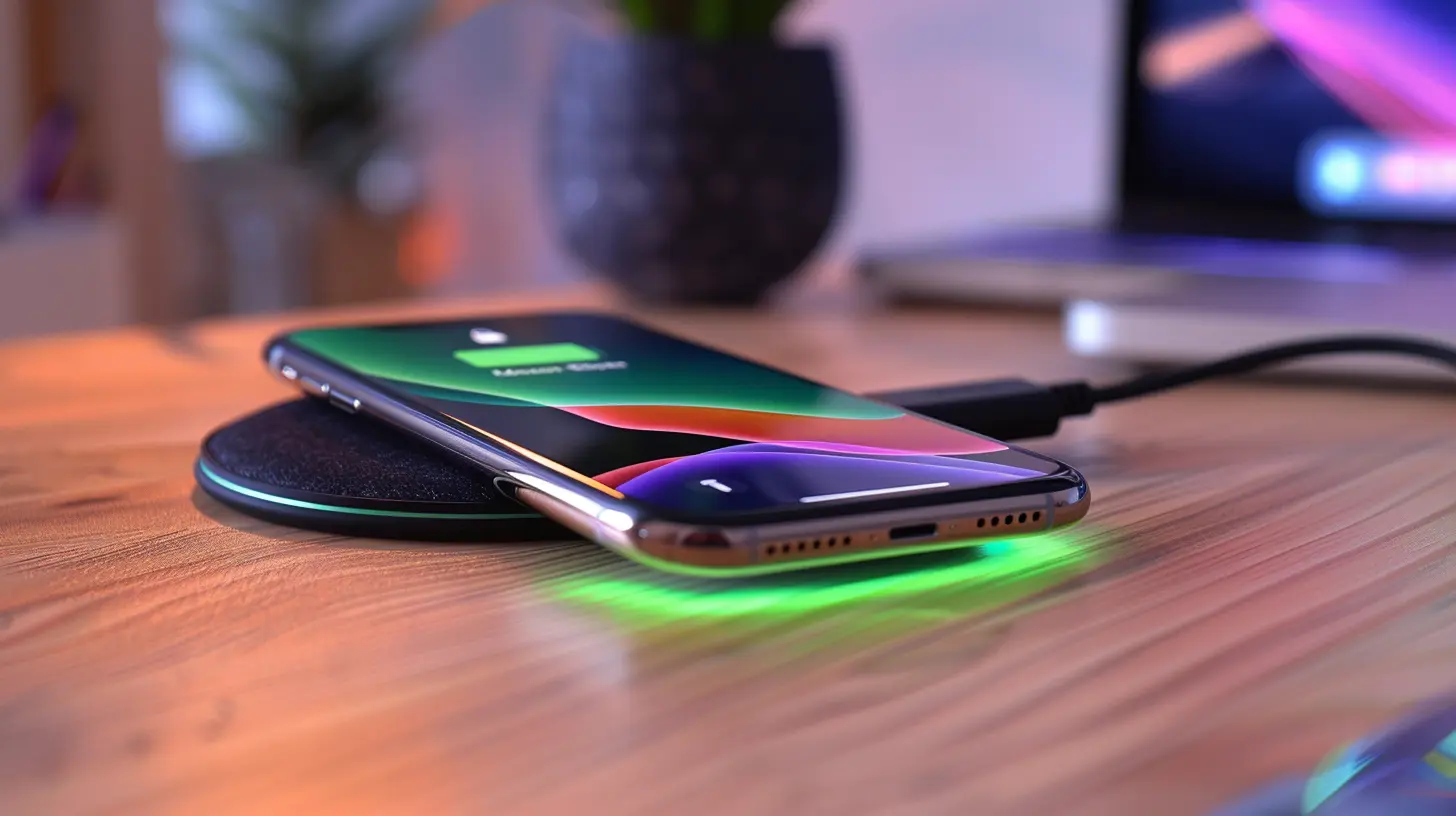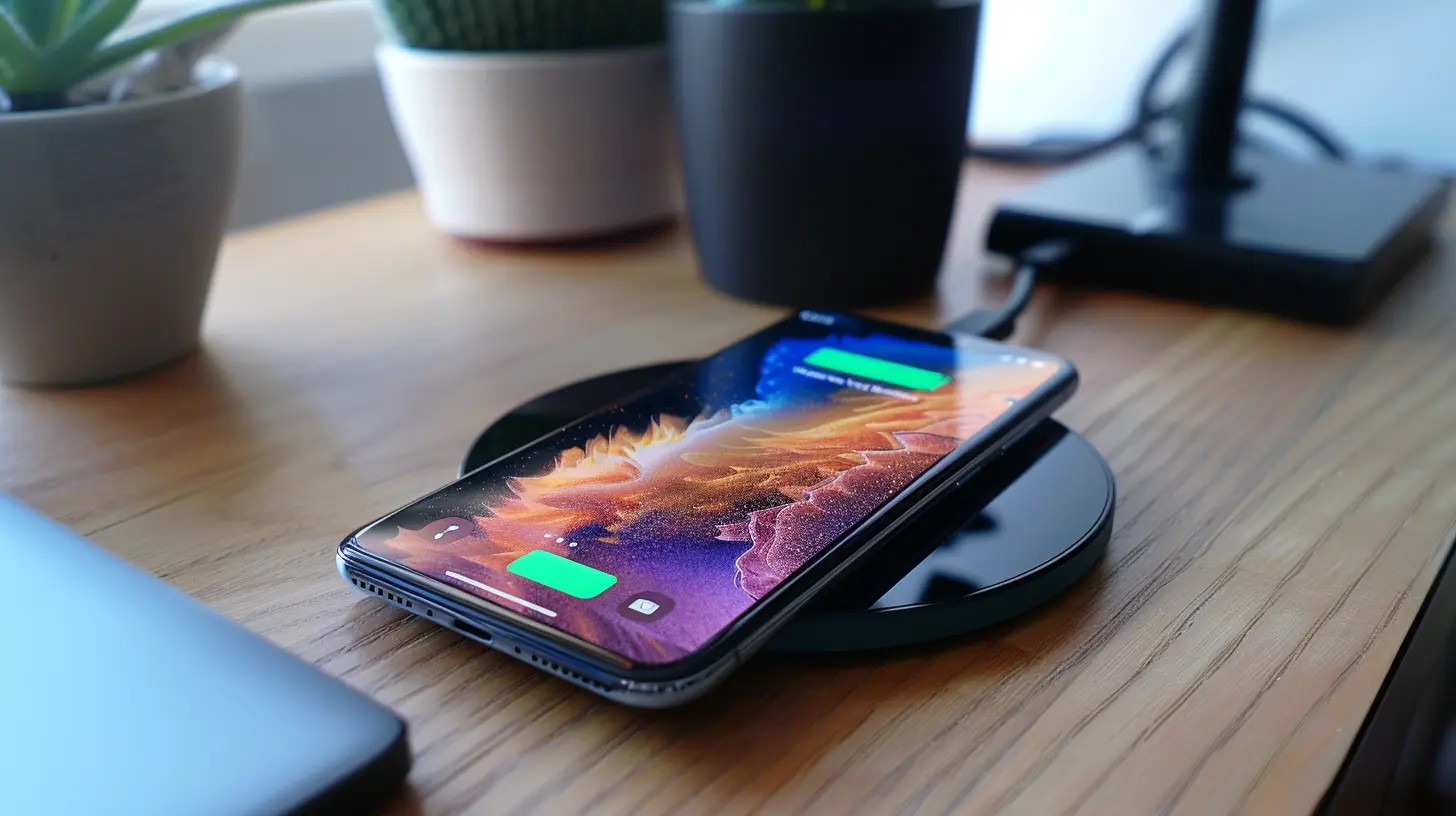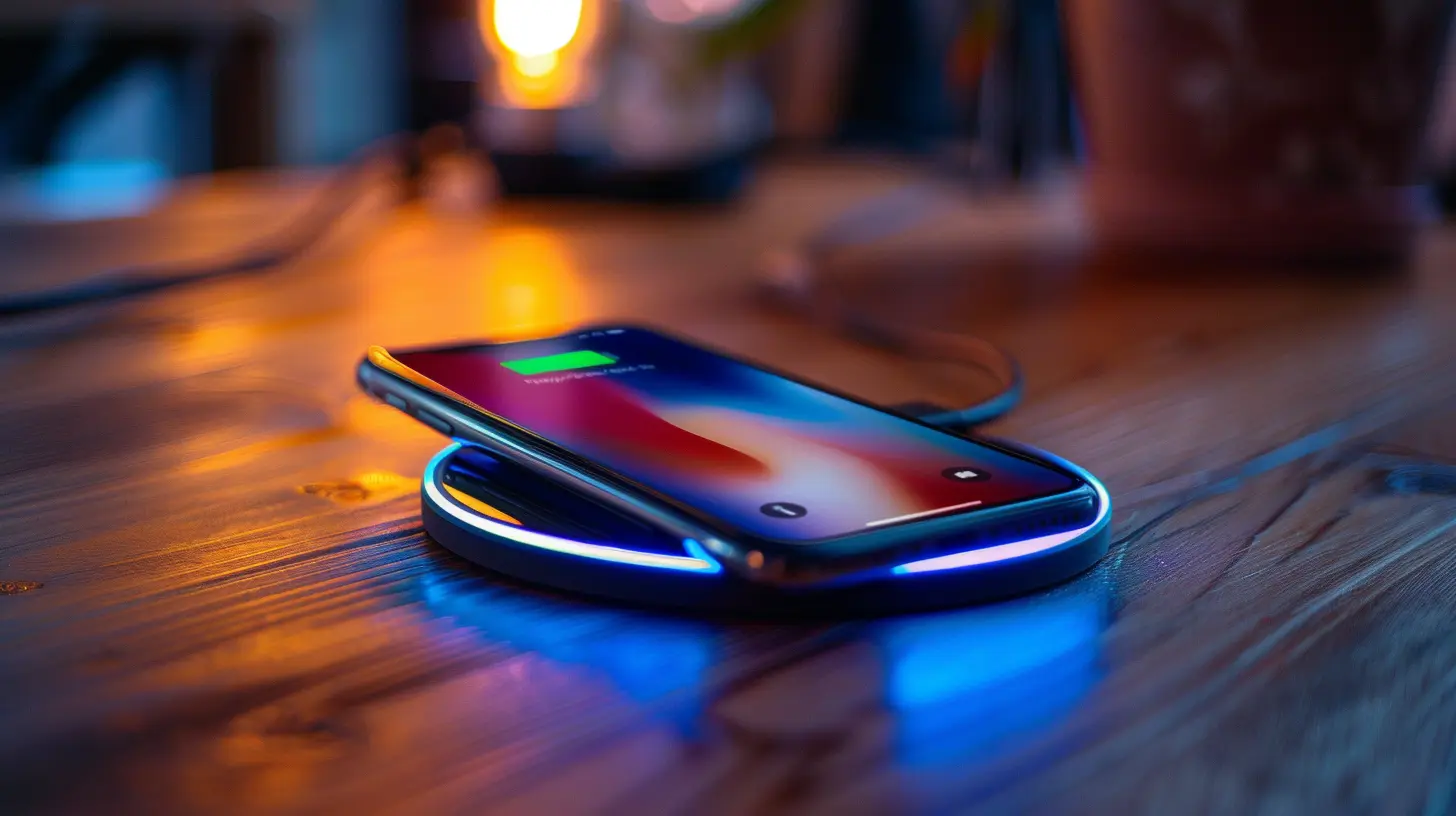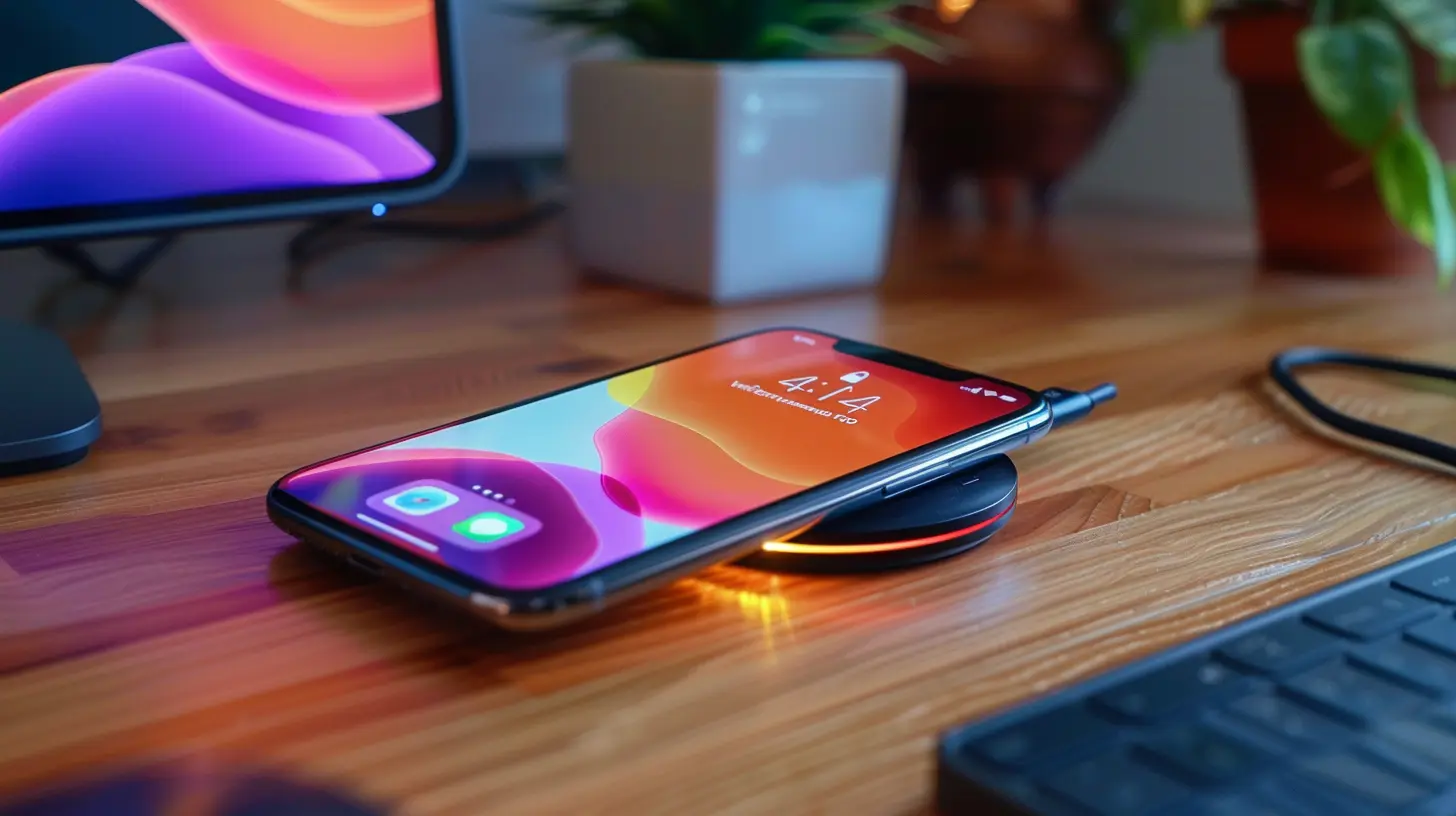How to Choose the Right Wireless Charger for Your Smartphone
16 October 2025
Remember the time when finding your phone charger was like searching for buried treasure? The cable always mysteriously vanished, or worse—it was tangled in a death knot that would make Houdini proud. Well, say hello to wireless charging, the superhero we never knew we needed! But wait, picking the right wireless charger isn’t as simple as grabbing the first one you see on Amazon.
So, how do you ensure you get a wireless charger that won’t leave your phone clinging to life at 5%? Buckle up, because we’re about to dive into everything you need to know. 
1. What Exactly Is Wireless Charging?
Before we go all-in, let’s break it down. Wireless charging is a fancy way of saying "charging your phone without the hassle of cords." It uses inductive charging, which basically means power transfers from the charger to your phone through an invisible magnetic field. Kind of like magic, but with science.Most modern smartphones support Qi wireless charging (pronounced "chee"—like the cheese, but cooler). That’s great news because Qi is the universal standard, meaning you don’t have to worry about proprietary nonsense. If your phone supports Qi, you’re good to go! 
2. Why Should You Ditch the Cables?
Still on the fence? Let’s talk about why wireless charging is the future:- No more broken cables – Those fragile charging cords break faster than your willpower on a diet.
- Less wear and tear – No more repeated plugging and unplugging, which eventually wears out your phone’s charging port.
- Sleek and hassle-free – Just drop your phone on the pad, and voilà! Charging begins.
The only downside? You can’t really use your phone while it’s charging unless you lift it off the pad. But hey, that’s a great excuse to take a break from doom-scrolling, right? 
3. Check If Your Phone Supports Wireless Charging
Before you rush to buy the fanciest charger on the market, make sure your phone even supports wireless charging. Most flagship smartphones from Apple, Samsung, Google, and a few others have had it for a while now. But if you're rocking an older or budget-friendly device, a quick Google search (or checking your manual—if you haven't thrown it away) will confirm if you're in the wireless era.Pro Tip: If your phone doesn’t have built-in wireless charging, don’t cry just yet. You can buy a wireless charging adapter (a thin receiver that sticks to your phone and plugs into your charging port) to give your device the wireless life it deserves. 
4. Speed Matters: How Fast Do You Want to Charge?
Wireless chargers aren’t all created equal. Some are as slow as a snail on a lazy Sunday, while others can juice up your phone almost as fast as wired charging. Here’s what you need to know:- Standard Charging (5W-7.5W) – Perfect if you’re just charging overnight and don’t mind the wait.
- Fast Wireless Charging (10W-15W+) – Ideal if you need a quick power-up before you dash out the door.
Check what wattage your phone supports because, spoiler alert: just because a charger CAN output 15W doesn’t mean your phone will accept it. iPhones, for example, max out at 7.5W unless you’re using Apple’s MagSafe charger, which goes up to 15W.
5. Pick Your Charger Type: Pad, Stand, or Multi-Device?
Wireless chargers come in different forms, and choosing the right one is like picking the perfect pizza topping—it depends on what you like.Charging Pads – The Classic Choice
Flat and simple. Just drop your phone on it, and you’re good to go. Ideal for nightstands or desks, but not great if you like watching videos while charging.Charging Stands – Great for Multitaskers
Want to keep an eye on notifications or take a Zoom call while charging? A stand lets you prop up your phone vertically or horizontally. Perfect for work desks!Multi-Device Chargers – Because One Is Never Enough
Got an iPhone, Apple Watch, and AirPods? A multi-device charger can juice them all at once, reducing the cable clutter in your life.6. MagSafe or Nah?
If you’re an iPhone user (iPhone 12 or newer), MagSafe chargers provide a magnetic snap-on charging experience that charges at up to 15W. But keep in mind:- MagSafe chargers only deliver full speed to iPhones. Other Qi devices might charge, but slowly.
- You need a MagSafe-compatible case, or the magnet might not stick properly.
If you're an Android user, MagSafe isn't a must-have, but some third-party brands are making magnet-friendly cases and chargers that work similarly.
7. Does the Brand Matter?
Would you trust a $5 wireless charger from a sketchy website to power up your $1,000 smartphone? Nope, didn’t think so.Stick to reputable brands like:
- Anker
- Belkin
- Samsung
- Apple (for MagSafe chargers)
- Nomad
Cheap knockoffs might overheat, charge painfully slow, or even damage your battery over time. Don’t gamble with your phone's life—invest in a certified charger!
8. Beware of Thick Cases (And Metal!)
Not all phone cases play nice with wireless charging. If your case is thicker than 3mm or has metal parts, your phone might struggle (or downright refuse) to charge.What works?
✅ Slim cases
✅ MagSafe-compatible cases (for iPhones)
✅ Plastic, silicone, or leather cases
What doesn’t?
❌ Metal cases
❌ Wallet cases with cards
❌ PopSockets (unless they’re removable)
If you have to take off your case every time you charge, it defeats the whole "convenience" factor. So, choose wisely!
9. Safety Features Are a Must
The last thing you want is a charger that turns into a mini frying pan. Look for these essential safety features:- Overheat protection – Prevents your phone and the charger from getting too toasty.
- Foreign object detection – Stops charging if something weird (like keys or coins) is on the pad.
- Overvoltage protection – Ensures stable power delivery without frying your battery.
Again, this is why buying from a trusted brand matters!
10. Price vs. Value: How Much Should You Spend?
Wireless chargers range from $10 to $100+, depending on features, speed, and brand. Here's a rough breakdown:- Basic 5W-10W chargers: $15-$30
- Fast 15W chargers with brand reputation: $30-$60
- Multi-device charging stations: $50-$100
If you're just charging overnight, a cheaper model will do the job. But if you want fast charging, durability, and safety, spending a little extra is totally worth it.
Final Thoughts: What’s the Best Wireless Charger for You?
At the end of the day, the best wireless charger depends on your phone, your needs, and your budget. Here’s a quick cheat sheet to help:- Want something simple? Go for a basic Qi charging pad.
- Need fast charging? Look for a 10W-15W charger.
- Own multiple gadgets? A multi-device wireless charger will clean up cable clutter.
- iPhone user? MagSafe is the way to go.
Whatever you choose, make sure you grab a quality charger from a reliable brand. Because nobody wants a charger that overheats like a summer sidewalk or takes 10 hours to reach 50%.
Now, go forth and charge wirelessly like a pro.
all images in this post were generated using AI tools
Category:
Wireless ChargingAuthor:

Vincent Hubbard
Discussion
rate this article
1 comments
Victor Wallace
Selecting the right wireless charger involves considering compatibility, charging speed, design, and safety features. It's essential to check for Qi certification and look for options with overheat protection and a suitable wattage to ensure efficient charging for your smartphone.
October 23, 2025 at 12:29 PM

Vincent Hubbard
Thank you for your insightful comment! You're absolutely right—compatibility, speed, design, and safety features are crucial when choosing a wireless charger. Qi certification and overheat protection are essential for optimal performance.


